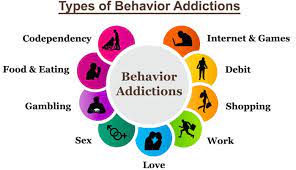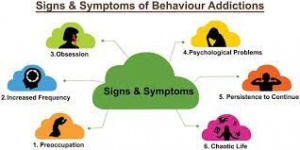What does an addiction mean to you? Does it represent a drug addict hanging out on the street? How about a dangerous man robbing a pharmacy for more pain killers? What if I told you that addiction can be so much more than that? What if I told you that cousin Joe who goes shopping 5 times a week is an addict? What if I told you that your nephew Jenny playing video games for 3 hours a day makes her a very young addict? These addictions are more closely related to a drug addiction than we knew before, below are some more examples of these behavioral addictions, or process addictions

What Does Addiction Look Like in the Brain?
Part of the problem with addiction is that many people still consider it a choice, or a moral failing to become addicted to something. Recent research has instead found that many people possess both a natural inclination to addiction as well as irreparable chemical damage following an addiction. The idea of being naturally drawn to addictive substances is not new, but until recently it was never understood just how much the susceptibility of a brain can change from person to person. The answer to this lies in the concept of dopamine and how much a brain can tolerate, which is highly variable. Dopamine is a chemical receptor that regulates how your body processes various stimuli such as drugs or in our case an outside stimulus. Normal dopamine signaling encourages your body to engage with a stimulus in order to hit the “appropriate level” of dopamine, for example if you are hungry your body will signal to get more food to hit that dopamine threshold and to keep you alive. Addictions abuse that cycle by adding in a strong stimulus that requires increasing and dangerous amounts of intake in order to reach the dopamine thresholds that make your brain feel normal. People have different levels of dopamine that feels normal, hence the potential for some becoming addicted much easier than others. In the past this was called an addictive personality, but we now know it is related to these dopamine levels more than anything people can control. Below are some physical signs and symptoms of addictions, especially behavioral. More on risks and dopamine

Why Are Behavioral Addictions Dangerous?
While addictions are universally regarded as bad, behavioral addictions are not treated as seriously as chemical addictions in many scenarios. This occurs for a number of reasons, but it often boils down to either treating it as harmless or downplaying the severity of the addiction. The former can be seen in many addictions that aren’t gambling, such as a boss not helping their employee with a work addiction or a mother dismissing their child’s video game addiction. The latter comes from the idea that addiction must require a chemical input, which has been proven to be false. New studies have found that a chemical called Delta FosB is misused in the brain the same way from a chemical addiction and a behavioral addiction. This link is still new, but the damage these addictions have already caused and will continue to cause is entirely preventable with new information and treatment. These addictions can be treated similarly to normal addictions; with things such as therapy, counseling, and medication, but too often they are written off until it is far too late. The sooner these behavioral addictions are treated more urgently, the better the chances become of overcoming these troublesome connections to surprisingly dangerous everyday activities. More on Delta FosB
